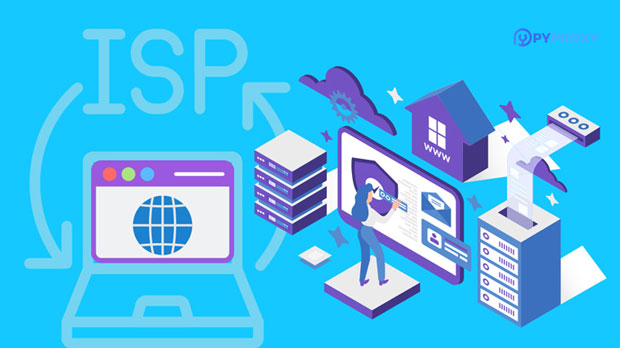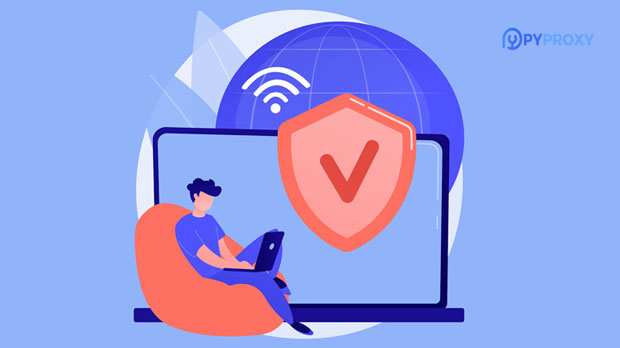Can the SOCKS5 proxy bypass content access restrictions?
socks5 proxy is commonly seen as an efficient tool for bypassing content access restrictions. But how effective is it really in circumventing censorship or geofencing? Understanding socks5 proxies requires an exploration of how they function and their limitations. Proxies, in general, help users disguise their real IP addresses, making it appear as though they are accessing the internet from a different location. While SOCKS5 is known for its flexibility and privacy features, it doesn’t necessarily guarantee total success in bypassing restrictions. This article delves into the inner workings of SOCKS5 proxies, explores their advantages, and analyzes whether they can effectively bypass content access restrictions. What is a SOCKS5 Proxy?SOCKS5 (Socket Secure version 5) is a protocol that routes network traffic between clients and servers, allowing users to access the internet anonymously. It operates at a lower level than typical HTTP or HTTPS proxies, providing greater flexibility and a higher level of anonymity. Unlike other proxy types, SOCKS5 can handle any kind of internet traffic (e.g., HTTP, FTP, P2P), making it a popular choice for a wide range of activities, from web browsing to secure communications.The SOCKS5 protocol is designed to be highly configurable, supporting features like username/password authentication and IPv6. Additionally, SOCKS5 proxies work on the transport layer, unlike application-layer proxies, which makes them more robust and harder to detect. This gives users more control over their internet traffic, potentially making it more difficult for content filters and firewalls to block.How Does SOCKS5 Work to Bypass Restrictions?SOCKS5 proxies can bypass access restrictions by masking the user's original IP address and routing traffic through a server located in a different geographical location. This process makes it appear as if the user is accessing the internet from the proxy server’s location, rather than their own. This feature is particularly useful in situations where access is restricted based on geographical location, such as in the case of geo-blocked content or region-specific censorship.For instance, a user in a country with strict internet regulations can connect to a socks5 proxy server in another country with more lenient internet policies. This allows them to access content that would otherwise be restricted, whether it’s websites, videos, or services that are blocked in their region.SOCKS5 Proxy and Geo-blockingGeo-blocking is a technique used by many websites and services to restrict access based on a user’s location. The most common use of geo-blocking is on streaming platforms that limit access to certain movies or shows depending on the viewer’s country. SOCKS5 proxies are particularly effective in circumventing geo-blocking because they allow users to connect to servers located in different countries, giving them access to content available in that specific region.However, it’s important to note that while SOCKS5 proxies can often bypass geo-blocking, they are not foolproof. Some services, particularly large streaming platforms, have sophisticated algorithms that can detect and block traffic coming from known proxy servers. Additionally, many websites now track not just IP addresses, but also other data points like device fingerprints and behavioral patterns. If these services detect unusual behavior or an IP address linked to a proxy server, they may block the user’s access.Bypassing Censorship with SOCKS5 ProxiesCensorship is another area where SOCKS5 proxies come into play. In some countries, governments impose heavy restrictions on internet access, blocking social media platforms, news websites, and even search engines. By using a SOCKS5 proxy, users can access a server in a country with unrestricted internet access, allowing them to bypass national firewalls and censorship.For example, in countries where platforms like Facebook, Twitter, and WhatsApp are blocked, a SOCKS5 proxy can provide access by routing the traffic through a different country where these services are not blocked. This makes it possible for citizens in highly censored regions to access global news, communication tools, and entertainment content.However, similar to geo-blocking, censorship circumvention via SOCKS5 proxies is not guaranteed to be permanent. Governments and network administrators often employ advanced filtering techniques to detect proxy traffic. Additionally, the use of SOCKS5 proxies in certain regions could be illegal or result in penalties, so users should exercise caution and stay informed about local laws.Limitations of SOCKS5 in Bypassing Content Access RestrictionsWhile SOCKS5 proxies offer several advantages, they come with limitations that can impact their effectiveness in bypassing content access restrictions.1. Detection and Blocking: As mentioned earlier, many websites and services employ detection methods that can identify proxy traffic. Some platforms maintain blacklists of known proxy servers and will block access from these servers. Additionally, sophisticated systems can detect patterns of usage that are typical of proxy servers, such as unusual geolocation or IP address changes.2. Speed and Reliability: When using a SOCKS5 proxy, the traffic is routed through a third-party server, which can slow down internet speeds. The quality of the SOCKS5 proxy server can vary, and if it is located far from the user, it can lead to latency issues or unreliable connections, especially during peak hours. This can hinder the ability to access content smoothly.3. Legal and Ethical Issues: In some jurisdictions, using proxies to bypass content restrictions may be illegal. Certain countries have strict regulations governing the use of proxies, and bypassing geo-blocking or censorship could lead to fines or legal consequences. Users should carefully review local laws to avoid potential risks.4. Security Concerns: While SOCKS5 proxies can improve privacy and anonymity, they do not inherently encrypt the traffic they route. Without additional encryption (such as using HTTPS or a VPN alongside SOCKS5), sensitive data could still be exposed. Some malicious SOCKS5 proxy providers may even collect data from users or insert malware into traffic. Therefore, users need to choose their proxies carefully.Conclusion: Effectiveness of SOCKS5 in Bypassing Content Access RestrictionsIn conclusion, SOCKS5 proxies can be an effective tool for bypassing content access restrictions, but their success depends on several factors. They can help users circumvent geo-blocking, access censored content, and enhance privacy by hiding their real IP addresses. However, their effectiveness is not guaranteed, especially against advanced detection and blocking technologies employed by websites and governments. Additionally, there are practical limitations such as slower speeds and potential legal risks that users must consider.For users seeking to bypass content restrictions, SOCKS5 proxies provide a flexible solution, but they should not rely solely on them without considering the potential challenges. Combining SOCKS5 proxies with other privacy tools, such as VPNs or HTTPS, can further enhance security and reliability. Ultimately, users must weigh the pros and cons of SOCKS5 proxies and use them responsibly, keeping in mind local laws and regulations.
2025-02-18

























































